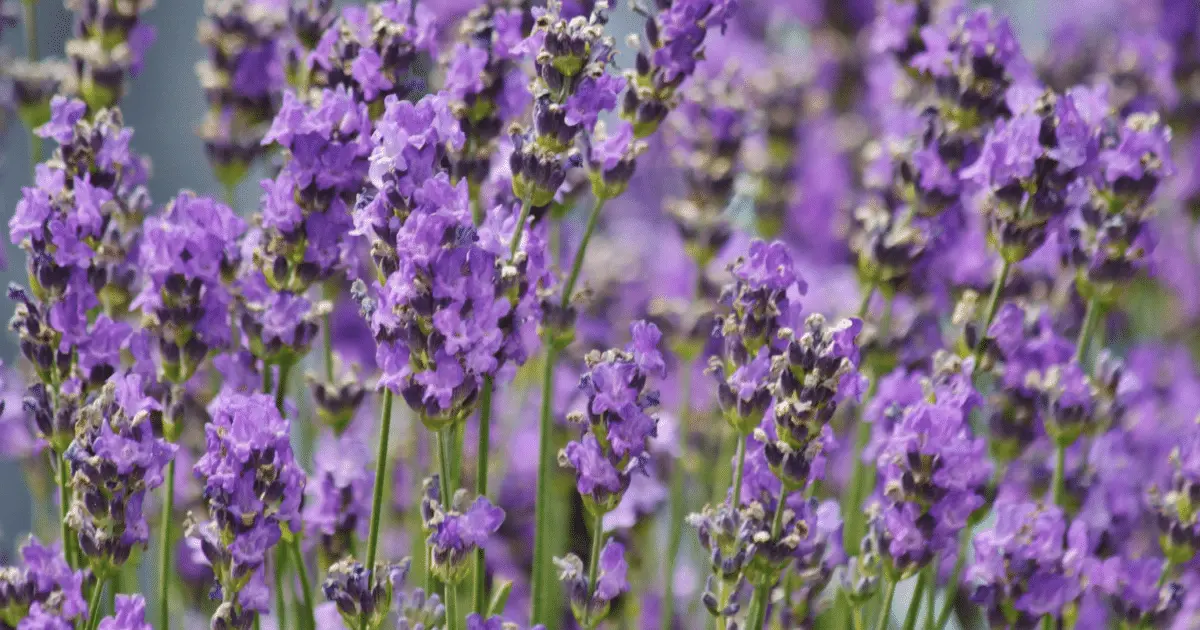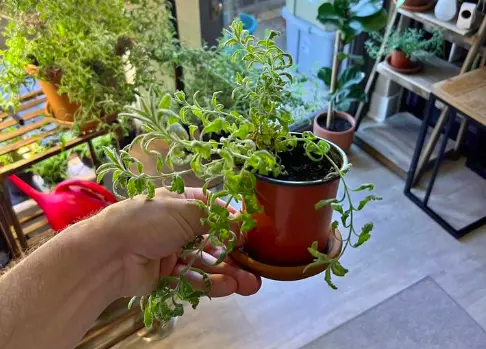Lavender is recognized as an extraordinarily medicinal plant owing to its curative and restorative properties. Lavender plants are related to Mint plants. They’re native to Cape Verde, North and Eastern Africa, the Middle East, the Mediterranean, the Canaries, Europe, and India. They were historically propagated as a ‘Holy Herb’ in a religious sense.
There’s more to learn about Lavenders than their charming purple blooms and attractive aromatic scents; we will discuss how to Propagate them as ornamental garden plants.
Lavender Propagation Made Easy: A Step-by-Step Guide

It’s important always to propagate your lavender pots to encourage the growth of new shoots and foliage and keep them blooming, tirelessly emanating their sweet scents and relaxing essence.
Lavenders are often propagated using softwood or hardwood cuttings. Still, I encourage newbie propagators to start with the softwood cuttings because getting a hardwood cutting ready for rooting requires a bit of skill.
Propagating Lavender from Softwood Stem Cuttings
Softwood cuttings root faster and easier in water or a Potting medium. It’s best to begin your cuttings preparation from late spring to early summer for quicker results.
Begin by choosing a stem with well-developed leaves and buds and no trace of blooming. If the stems are blooming already, pluck off the flowers on the chosen stems so it can only emphasize root development.
Ensure you’re only using a clean, sharp garden knife or scissors to make the cuts, thereby preventing infection of the cuttings at an early propagation stage. Each stem cutting should be three to six inches long, bearing a good foliage development.
Next is to remove the leaves at the lower parts of the stem cuttings, leaving behind those at the tips. It would be best if you also peeled off the hard coverings at the base of the cuttings to aid faster rooting.
Place the cuttings on a dry, warm surface and allow for a day or two to heal completely.
Propagating Lavender from Hardwood Cuttings

Hardwood Lavender cuttings root a bit longer, but they’re always more dependable to produce new Lavenders successfully.
Another benefit of rooting hardwood cuttings is that they can be viable in the middle of fall and spring seasons; softwood cuttings, on the other hand, are only viable in late spring.
A third advantage of propagating hardwood cuttings is for some varieties of Lavender called ‘Free-bloomers.’ They bloom almost all the time, giving a little window for rooting their softwood stems successfully; best to root them after their blooming season.
Hardwood Cuttings are made the same way as softwood cuttings; only ensure you make the cuts right under the nodes, with each stem having leaves and buds where possible.
After taking the cuttings, peel off the hard surface of the lower ends and remove the lower leaves too. Your cuttings can now be allowed to heal up before rooting them.
Rooting Lavender Cuttings in Water
Lavenders are easily rooted in water, although it’s more beneficial to the new plants if they’re rooted in a Potting medium.
Rooting in water is faster and easier to set up; you also get to keep a close eye on the thriving cuttings.
Get a glass vase or jar and pour water until it’s half full; then insert the calloused cuttings into it. The water should be at normal indoor temperature, most preferably untreated clean water is best for rooting garden plants.
Place the set-up under indirect sunlight and ensure the water is changed weekly. Your cuttings will begin to root in 2-4 weeks.
Ensure none of the leaves are in contact with the water, and leave the rooted cuttings only a short time in the water after rooting. Once the roots grow to 2-4 inches, the cuttings should be transplanted promptly.
Rooting Lavender Cuttings in a Potting Medium

Some propagators practice rubbing the rooting hormones on their calloused cuttings, but I don’t think it’s necessary. What’s important is the draining and airflow capacity of the Potting medium.
Pour the Potting Mix into the pot until it’s almost full, and insert the cuttings to a maximum of 1-inch depth around the edges of the pot. You can use your little finger or a sharp-pointed material for the holes.
Secure the cuttings by pouring in more potting mix. First, watering is done immediately after planting the cuttings but ensure that the excess water drains off completely before placing the pot under indirect sunlight.
Your cuttings will begin to root in 2-4 weeks after potting, and you don’t need to water immediately if the potting mix was already moist or watered before planting.
How to Best Propagate Lavender Pots
Lavenders have a history that predates modern civilization, but to date, they’re still a great ingredient in the fashion and perfumery industries. They are best propagated as annual plants in a warm, semi-moist environment, although they can grow as wild thriving perennials.
Lavenders tend to grow best in environments with low humidity and abundant sunshine. They thrive best under the full glare of bright sunshine but require shade during the hot sunny summer months to protect their leaves from sunburns.
When properly maintained and pruned, Lavender grows up to 8 inches tall and continues blooming and Ozzing its enjoyable scents indoors for more than fifteen years.
Finest Potting Blends for Propagating Lavender
Their finest potting soil is a fast-draining, well-aerated potting mix with good nutrient enrichment. They will develop excellently in low or averagely-rich soil potting.
It’s essential to keep the Potting medium neutral or partially alkaline for best results; I add some horticultural grit to my pots for better airflow. A good trick is to punch air holes at the sides and bottom of the pot.
A soilless potting mix is sometimes preferable because it eliminates the risk of potential parasites and fungal spores hibernating in a garden soil sample.
For your lavender pots, you can have a soilless potting blend of perlite, peat moss, or vermiculite and fine sand. Coconut coir is always preferable to peat moss because it demonstrates better percolation and enhances faster root development.
A soil-based Potting should comprise 2/3 fine sand, 1/3 coarse sand, a blend of aggregate pumice, some crushed gravels, and a measure of expanded shale.
You can also enrich with 5% compost or other organic compounds.
Older Lavender pots may need to be fertilized after the first two or three blooming seasons. Lavenders require a fertilizer composition with minimal nitrogen content.
I always recommend a 15-15-15 or 7-9-5 NPK formula.
Any commercial fertilizer with higher nitrogen content can also be used if we dilute it before applying.
Watering your new Lavender Pots
Lavenders have developed an efficient resistance to water shortage; you only need to worry about over-watering them.
Excessively watering your Lavender Pots places them at risk of rooting roots and fungal infestation. A good practice is to water the new pots once or twice every week until there’s consistent rainfall.
Older plants can be watered biweekly or once in three weeks until they begin to grow buds and bloom. Lavenders are best watered early in the morning before sunshine spreads across the landscape.
A great symptom to look out for in over-watered Lavender plants is when the Leaves begin to turn yellow, indicating leeching in the soil.
Their therapeutic and medicinal prowess have been proven to improve health conditions such as insomnia, skin diseases such as eczema and acne; and they’re also used as antioxidants for curing injuries.
Lavender scents are quite unmistakable, giving off a blend of Rosemary and Mint in perfect harmony. You can see them blooming in Summer, usually between July and August, a great season when colors are well perceived.
To get them blooming as early as possible, you should begin their propagation in the Spring months between March to May.
Dog lovers should be careful not to mix lavender essences in dog diets because dogs are fatally allergic to linalool when consumed in great amounts. Linalool is a chemical compound in lavender essences.
